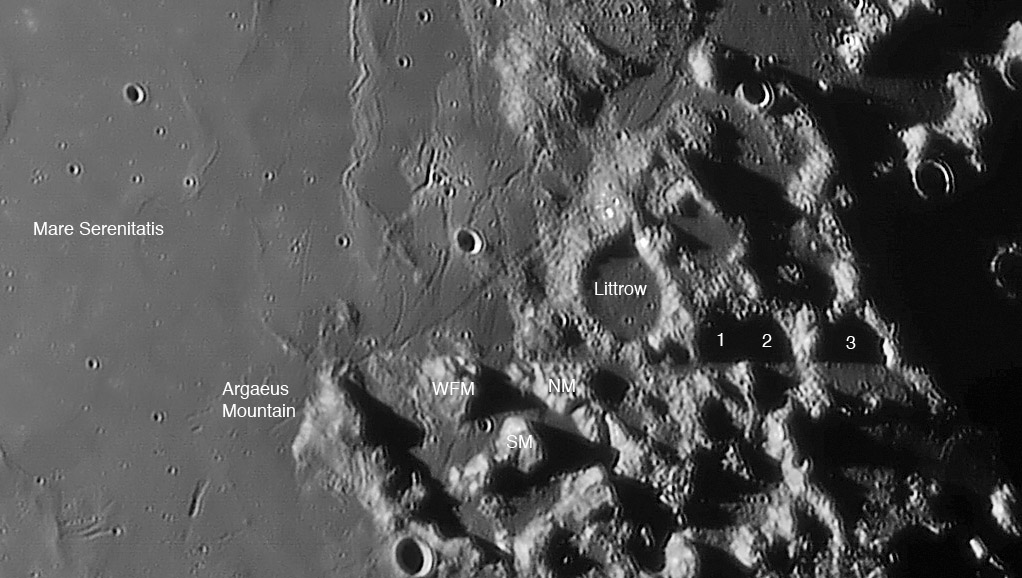
image by Павел Пресняков (Pavel Presnyakov), Kiev Ukraine
The eastern shore of Mare Serenitatis is familiar territory with Posidonius, le Monnier and the Taurus-Littrow Apollo 17 landing area. That makes it all the more surprising that there is an absolutely conspicuous feature in Pavel’s image that I’ve never noticed before. Do you see the horizontal line that extends across the north end of the Argaeus Mountain to the south side of Littrow? The truncated ends of the West Family Mountain (WFM) and the North Massif (NM) strongly suggest the line is a boundary, as do the ends of the coincidental shadows of the unlettered half craters 1, 2 and 3. A high Sun view shows that the southern halves of these craters are missing, as if they had been sheared off. A lower Sun image confirms that the linear trend is not an artifact. So what is it? The Argaeus Mountain and the massifs that surround the Apollo 17 site jut out westward further than the adjacent hilly terrain north or south of it. It is tempting to say that this area slid westward into its present position, with the Littrow Fault (new informal name) as the sliding boundary. But there is no equivalent boundary on the south side. The missing southern walls of the ruined craters 1, 2 and 3, and the truncated northern edges of WFM and NM suggest that material was faulted - if it didn’t move sideways did it drop down? Possibly, but again, no real supporting evidence. Often lunar faults are radial to large impact basins, but this one isn’t. Finally, faults are often deep conduits for magma. Perhaps the Littrow Fault was a deep passageway for the gas-rich magmas that emplaced the dark pyroclastic deposits in the Apollo 17 area. These are all speculations, but what seems to be real is the linear feature itself.
Technical Details:
01.10.2007, 01:13 UT. 10″ TAL-250K Klevtsov 1:8.5 + 3X barlow + EVS-135, b/w 1280×1024 15fps; 100 frames from 1000 in Registax4; mosaic from 2 frames.
Related Links:
Rükl plates 24 & 25
Pavel’s website
Yesterday's LPOD: A Wonderful Corner
Tomorrow's LPOD: Colorful Topo



